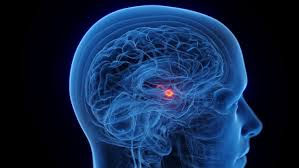5 Principles of Temperament Based Treatment with Support
- support528742
- Jun 4, 2024
- 3 min read
There are five core principles to TBT-S that shape how the treatment runs and why it looks different from other forms of care. Because TBT-S is founded on biological understanding of eating disorders, we view eating disorder behaviors as a symptom of a larger illness. TBT-S addresses the root cause of eating disorders, which lies within the brain and biological traits a person possesses. We look to treat the trait, rather that treat the symptom. A person could have a reduction in symptoms, but still have a very prevalent eating disorder. So, while symptom reduction is an important part of recovery, it is not the sole purpose of treatment at Brain Based Therapy NW.
Let’s walk through the 5 principles of TBT-S together:
1. Eating disorders are brain and biologically based illnesses
- The assumption made within the general public is that eating disorders are social and environmental disorders that are purely psychological. In reality, there are dozens of brain areas that contribute to eating disorders. An eating disorder is a result of abnormal brain firing which tells a person food is a threat. The insula, amygdala, nucleus accumbens, and temporal lobe are just a of the brain regions the contribute to eating disorders. TBT-S understands the brain’s role in eating disorder and the treatment targets specific ways to rewire the brain.
2. Treat to the trait or temperament underpinnings
- Everyone has traits that are genetically encoded into their genome. Whether it be perfectionism, impulsivity, empathy, attention to detail, or any of the 54 commonly identified features of those with eating disorders, these traits are something you are born with. We cannot switch on or off our temperament because it is genetic. However, we can shift our traits to be productive rather than destructive. In TBT-S, each activity, worksheet, mealtime, or educational lecture has direct ties to temperament. We create a safe space for self-discovery, and deeper understanding of one’s own traits. Once this understanding is strong, we can work to integrate productive traits into a person’s recovery plan. This allows for individualized care that is backed by scientific understanding of behavior change.
3. Food is medicine
- Food is essential to life. For someone with an eating disorder, eating food is anxiety educing, uncomfortable, stressful, and may not taste good. We acknowledge this, and also acknowledge that everyone must eat. So, we view food in the same way we would view a medical prescription. There may be side effects that come with taking a lifesaving pill, but we endure those side effects in order to live. Well, in this case, food is the life saving medicine. Bloating, mental distress, anxiety, constipation, and irritability are all potential side effects of food for someone with an eating disorder. However, we know that food is necessary to survive. In TBT-S there is an emphasis on consuming enough food. It does not have to be enjoyable, but it is viewed as a medical necessity.
4. Supports are a needed and necessary part of the process
- Typically, intensive eating disorder treatment isolates the patient from their family, friends, and home. The focus is on reducing symptoms and refeeding. But then, these patients return home into the same environments, with the same triggers all around them and relapse is common. TBT-S works to eliminate this barrier by inviting loved ones straight into the treatment room. Eating disorders are inherently secretive illness that thrive in isolation. During the 5-day intensive TBT-S program, supports are educated about the biology of eating disorders, hear directly from their loved one about their struggles, practice utilizing mealtime skills, have open communication, and work through tangible documents that can be implemented when the treatment week ends. We cannot continue to ask people to fight their eating disorder on their own. We do not expect those with other illnesses to isolate and ‘figure it out’ and so we should not have that expectation of loved ones struggling with eating disorders.
5. Action or movement is fundamental to change
- When the body is stagnant, the brain is also stagnant. In order to create behavioral change, we need to undergo behavioral action. Movement can be used to interrupt destructive thoughts and shift them to be productive. Additionally, practice with acting out skills helps our brains remember things better, so supports and clients will feel more comfortable implementing skills outside of the 5-day treatment week. Low intensity walks, fun interactive games. engaging questions, and fidgets are all a part of TBT-S.



Comments